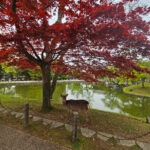If you’re exploring Kyoto or nearby Osaka, don’t miss the charming town of Uji. Nestled between Kyoto and Nara, Uji is famously featured in the Tale of Genji, one of the most significant literary works in history. It’s also renowned for its green tea plantations, which have been cultivating Japan’s quintessential tea since the 12th century.
Uji boasts a variety of historic architecture, including rustic temples and the oldest surviving Japanese shrine. These sites are recognised by UNESCO as World Heritage Sites, highlighting the city’s cultural and spiritual significance.
While in Uji, you can immerse yourself in Japanese tea ceremonies, tasting some of the country’s finest matcha and green teas.
All these cultural elements make Uji an ideal day trip destination, a true cultural gem you shouldn’t miss during your trip to Japan.
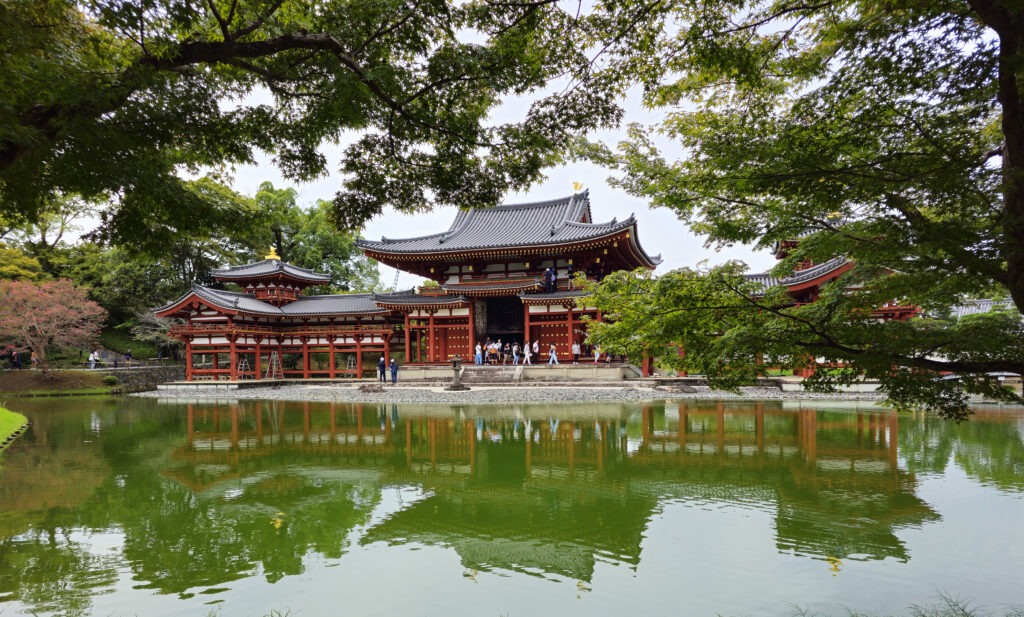
What to see and do in Uji
Chazuna museum
Start your exploration at the Chazuna Museum to learn about Uji’s tea, culture, and history.
This museum, located in a park at the heart of several historic sites, connects the Uji Bridge, the ruins of the Taiko Embankment, and the 2nd-century tomb of Prince Uji no Wakiiratsuko.
Within the park is a community center called “CHAZUNA”, where you can discover the origins of Uji tea through exhibits and videos about the city’s history. Participate in tea-picking and matcha-making activities to enhance your visit.
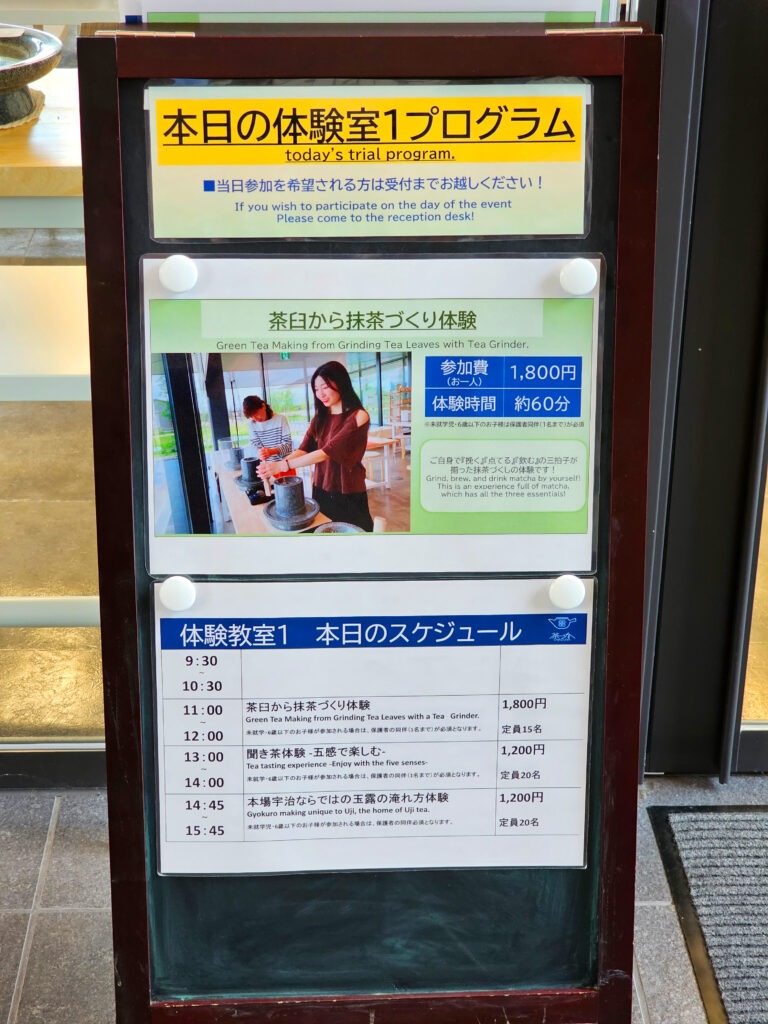
Chazuna is a 4-minute walk from Uji Station on the Keihan Uji Line and a 12-minute walk from Uji Station on the JR Nara Line. It is open from 9:00 am to 5:00 pm.
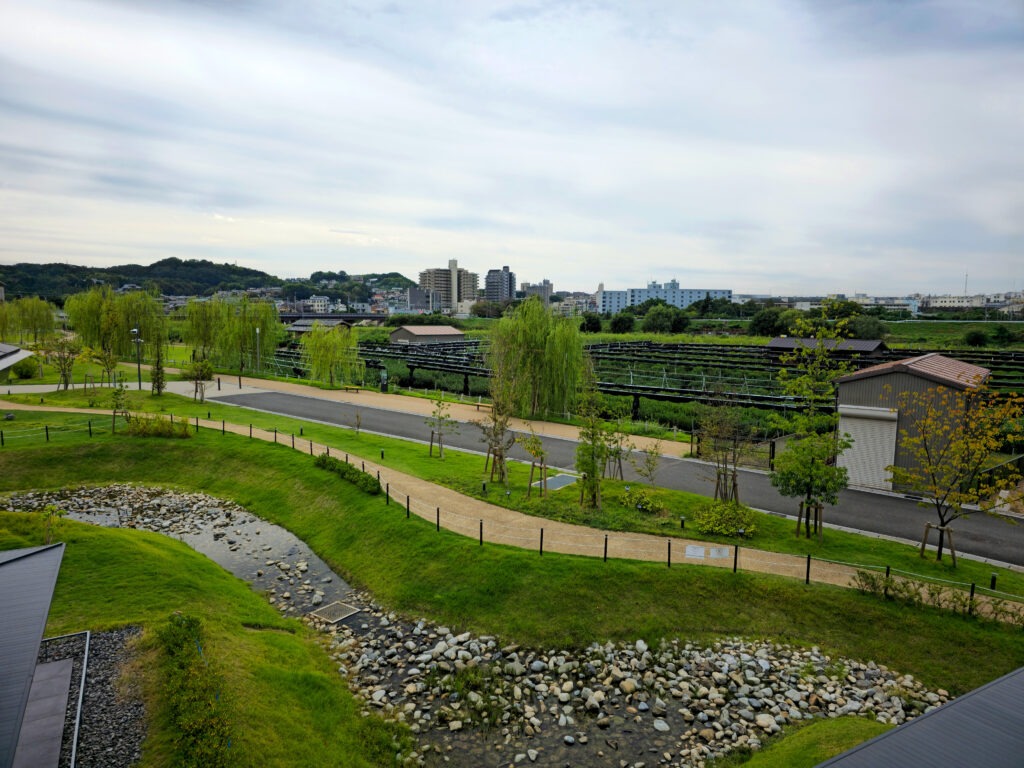
Murasaki Shikibu statue
One of the first sights you’ll see in Uji is the statue of Murasaki Shikibu, the author of the famous Tale of Genji.
Considered the world’s first female novelist, she wrote this classic in the late 11th century. The story follows the romantic adventures of the charismatic prince Hikaru Genji, exploring the world of the Heian imperial court and its poetry-centric culture.
Since Uji features prominently in the story, it attracts many visitors each year. Another notable site is the statue of Ukifune and Prince Niounomiya.
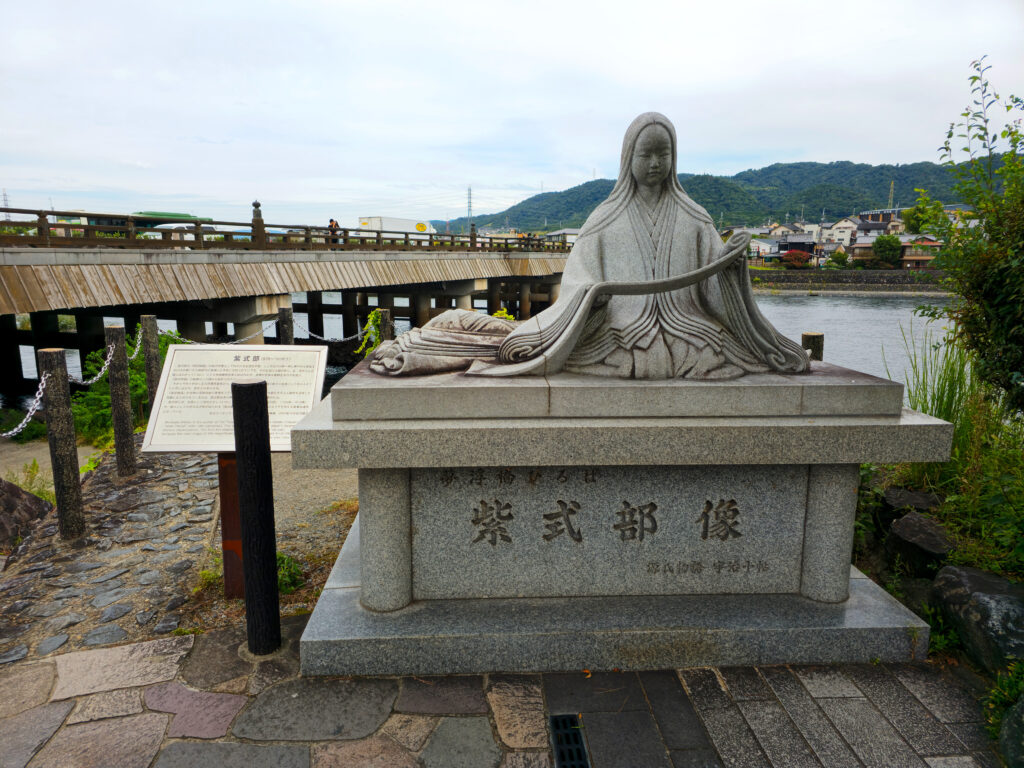
Genji Monogatari museum
To delve deeper into the Tale of Genji, visit the Genji Monogatari Museum. The museum recreates the world of this classic novel with image projections, models, and exhibits. You can see Heian-era aristocrats’ costumes and home furnishings.
Admission is 500 yen, and the museum is open from 9:00 am to 4:30 pm.

Byodo-in temple
Byodo-in Temple is Uji’s most popular attraction, showcasing Pure Land Buddhism architecture.
Recognised as a UNESCO World Heritage Site in 1994, the highlight is the Amida Hall, or the Phoenix Hall, named for the two large phoenix statues flanking it. Inside is a renowned depiction of the Amida Buddha.
The image of this beautiful temple is featured on the back of 10-yen coins, making it a must-visit site in Uji.
Byodo-in Temple is open daily from 8:30 am to 5:30 pm, with an entrance fee of 600 yen. Visiting the interior of the Amida Hall costs an additional 300 yen.
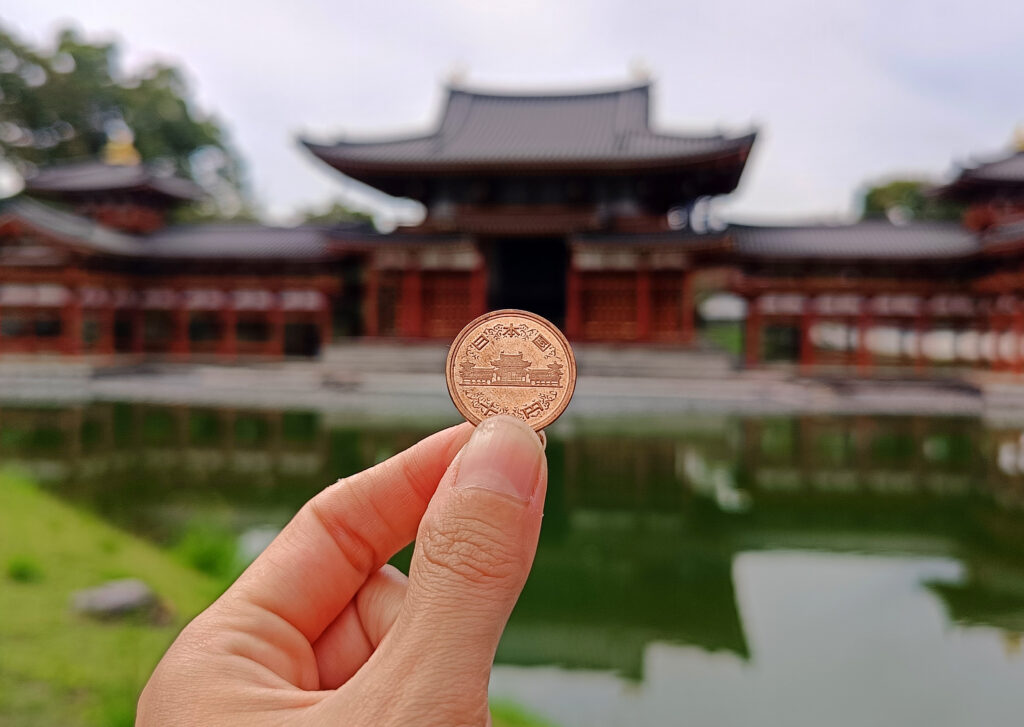
Ujigami shrine
Another UNESCO World Heritage Site, Ujigami Shrine, is considered Japan’s oldest shrine, believed to have been built around 1060.
The main hall follows the nagare-zukuri architectural style with an asymmetrical curved roof. One highlight is the Kiriharasui Well, one of the oldest water sources in the country.
Ujigami Shrine is open daily from 9:00 am to 4:00 pm, and admission is free.

Uji Jinja shrine
Also recognised as a UNESCO World Heritage Site, Uji Jinja shrine is located very close to Ujigami shrine and follows the same nagare-zukuri architectural style. In fact, the two shrines used to be one until they were separated during the Meiji period.
The shrine is open daily from 9 am to 4 pm, and admission is free.


Uji’s green tea
A visit to Uji isn’t complete without indulging in its famous matcha, Japanese green tea. Uji green tea is highly prized throughout Japan, and one of the best places to buy it is at Tsuenchaya Tea House, recognised as the oldest tea house in the country.
For a more immersive experience, head to Taihoan, a local tea house near Byodo-in Temple, where you can participate in a traditional tea ceremony. Just a few meters away, the Fukujuen Ujicha Kobo workshop offers hands-on tea-grinding classes, followed by fresh tea tasting.
If you want to take a piece of Uji home with you, the souvenir shops on Omotesando Street, right next to Byodo-in Temple, sell a variety of teas and city souvenirs.
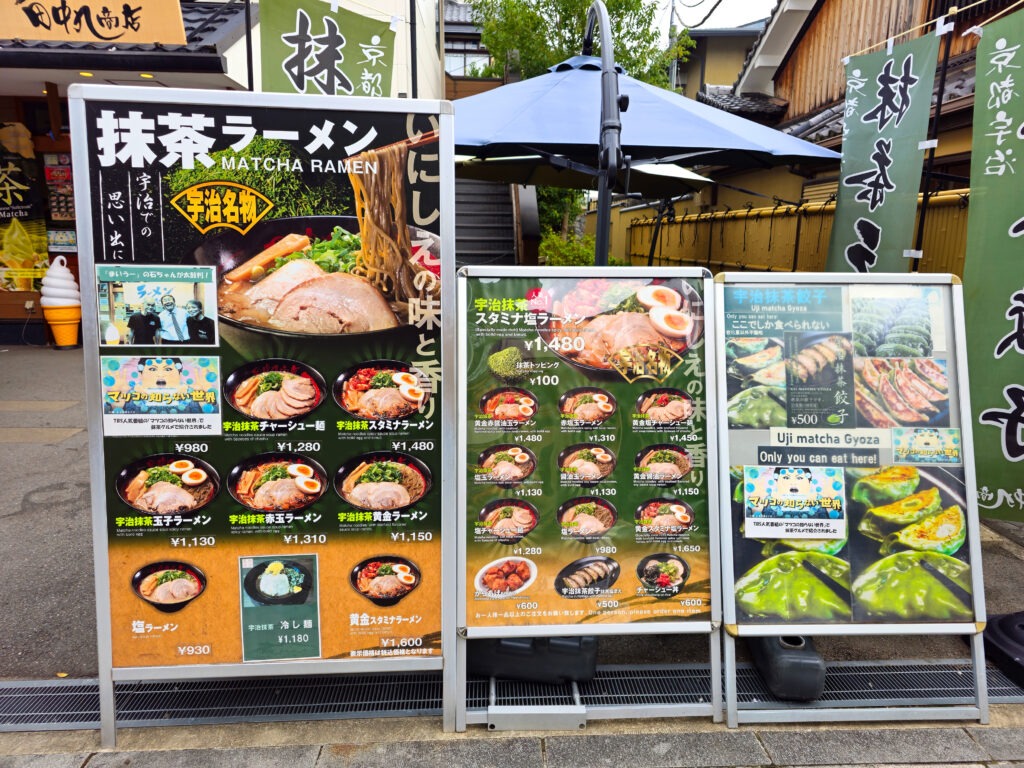
Nintendo Gallery
Nintendo fans will soon have a new must-see destination: a former Hanafuda card factory and Nintendo logistics center transformed into a Nintendo museum.
Originally announced in the September 2023 Nintendo Direct, the museum was scheduled to open in March 2024, but the opening has been pushed back. According to a construction sign noted by Nintendo Life, the estimated completion date is July 30, so we expect it to open to the public in November. Keep an eye out for updates, as this is a must-visit for Nintendo enthusiasts traveling to Japan.
The museum is about a 20-minute walk from the station, in the opposite direction of Byodo-in Temple.

Getting around Uji
Thanks to the close proximity of most attractions, Uji is perfect for exploring on foot.
Uji Station is just a 10-minute walk from Byodo-in Temple, and even the farthest temples are within a 30-minute walk from the city center.

How to get to Uji
Just 20 km from Kyoto, the easiest way to get to Uji is by taking a JR or Keihan train.
If you have theJR Pass, you can take the rapid or local train on the JR Nara Line to Uji Station. The trip takes only 20 to 30 minutes. Since these stations are very close to each other, you could easily combine your visit with a trip to Nara on the same day.
If you don’t have a Japan Rail Pass, you can take the Keihan Line train. For example, from Keihan Tofukuji Station to Keihan Uji Station, which takes about 37 minutes and costs 310 yen.
Both options are included in the Kansai Area Pass.


